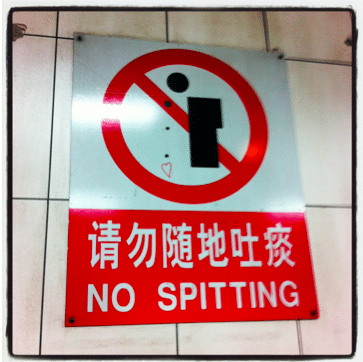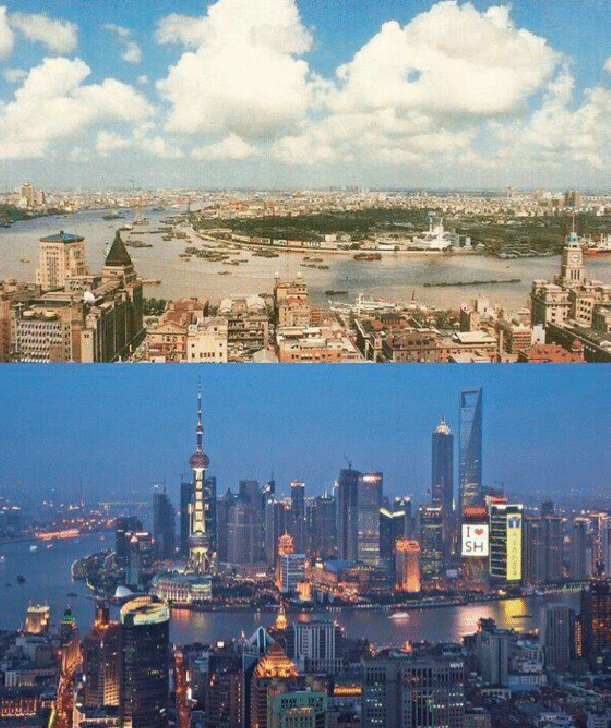Despite the shiny skyscrapers, and Gucci stores on every corner, I find that living in Shanghai is a real tease. The city’s rapid growth unarguably has been a real success story in economic development. A picture comparing Shanghai’s skyline in 1990 vs. 2010 speaks better than words. Yet, the city’s infrastructure development has far outpaced the people. You can give a city the façade of modern living, but people’s habits cannot be changed overnight.
This phenomenon is neither good nor bad, but more confusing and frustrating to the foreigners who are used to associating a certain set of behaviors with a certain level of infrastructural development. When I was a Peace Corps Volunteer serving in Cameroon, I lived in a village house without running water. I had an enclosed latrine in my back yard that self-cleans as I shower each day. The system works.
One of the most frustrating things in Cameroon is to live in a house or an apartment that is built for running water, but does not have it. The supposedly flushing toilet and faucet are there to serve as a constant tease and reminder of the lack of running water. How annoying! Well, I find that level of tease and frustration with living here in Shanghai.
The subway system in Shanghai is marvelous. It is clean, efficient, and has signs everywhere so that one can never be lost. Yet, riding the shiny subway can be one of the most frustrating things about living in this city. The minute that the subway door opens, people are walking into your face, because the concept of letting passengers off the train first has yet to catch on widely. Then, there are the escalators. The idea that you should stand on the right and walk on the left has also yet to catch on as widely as it should, and it is most frustrating. The stations are always kept spotless, likely because of the army of cleaning staff always sweeping. But, when I saw signs that warn people of spitting in the station, I didn’t realize that it really is something that happens from time to time.
Even establishments that cater to the foreign and the more affluent suffer from a bit of the development gap. I am a member of a yoga studio in my neighborhood that offers hot yoga classes. Yet, in the past six months that I’ve attended these classes, the rooms are seldom hot, but rather, lukewarm. Initially, I complained, but was told that a member had complained that the room was too hot, so they turned down the heat. What logic. Doesn’t it make more sense to advise that member that hot yoga is SUPPOSED to be HOT? Alas.
The city is constantly changing, and the government is doing its part to change people’s behaviors. Signs are posted everywhere in public spaces in an attempt to educate. Traffic wardens are on duty at all major intersections to make sure citizens are not crossing streets at red lights, etc. Slowly, but surely.
Meanwhile, foreigners simply have to treat the development gap as one of Shanghai’s many charms. The ability to laugh at frustration is key to survival. And sometimes, the city surprises you. Last week, I attended a hot yoga class at the appropriate heat level. I walked out of the room drenched in sweat and couldn’t be happier. It’s the little things.



